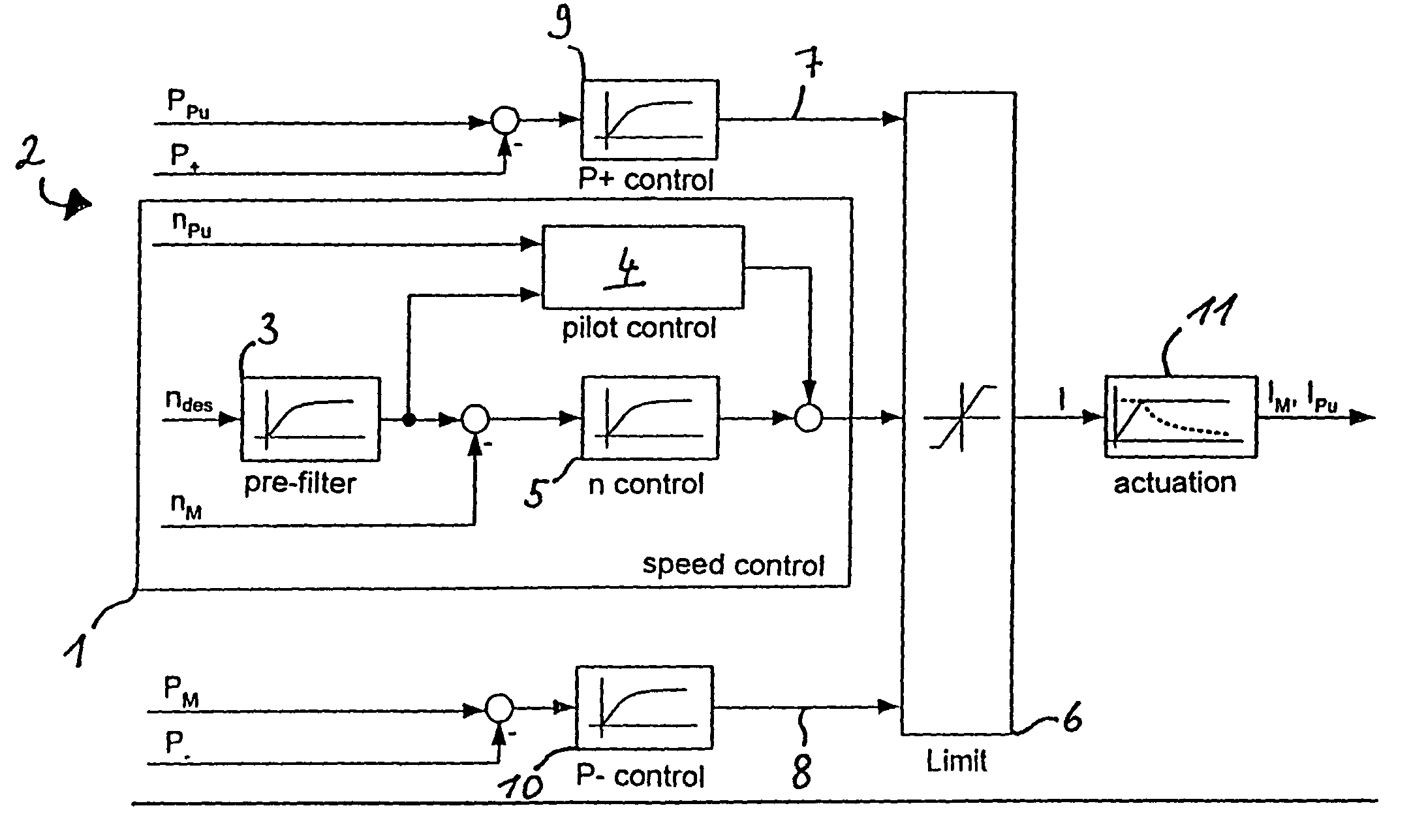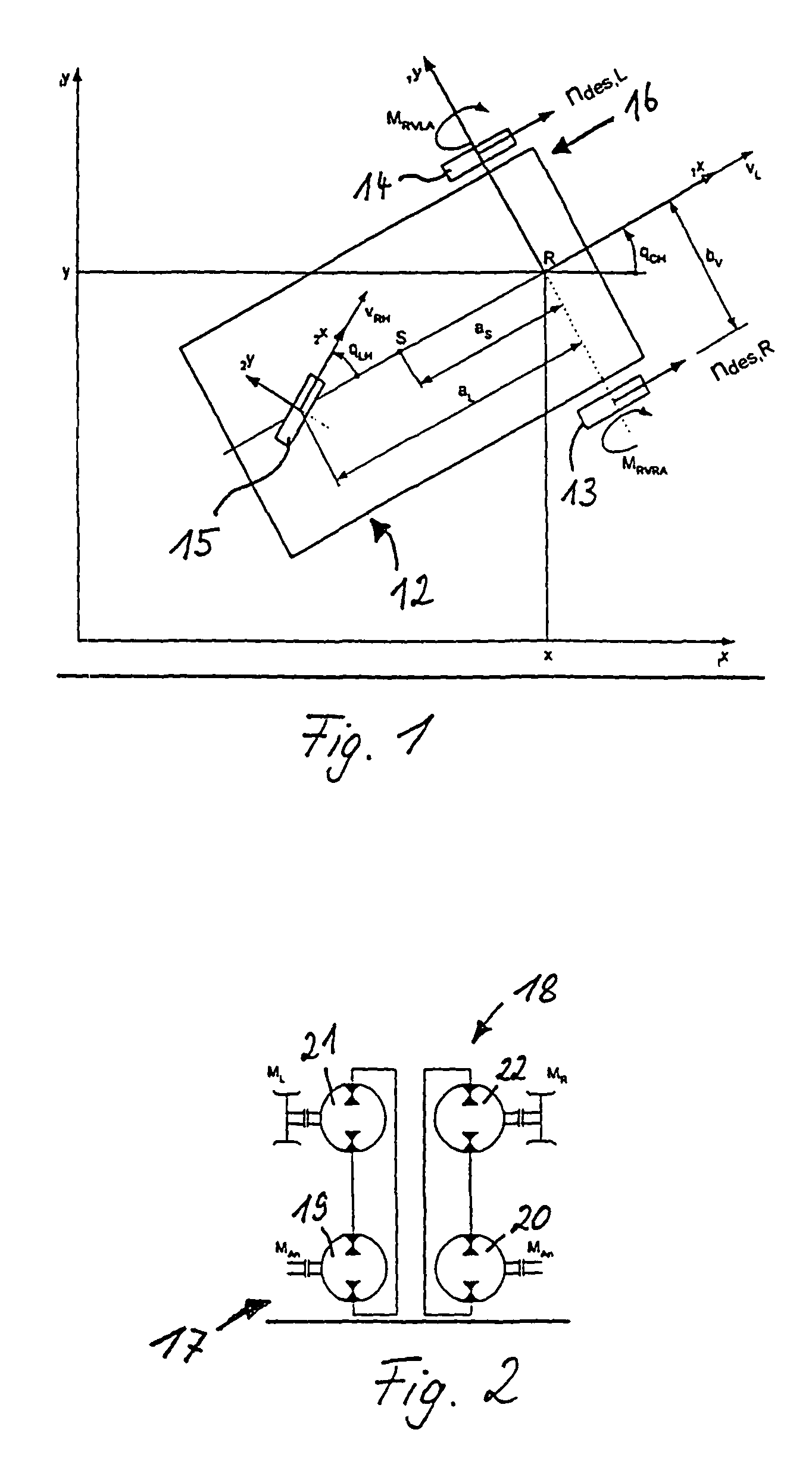Method and device for controlling a drive system
a technology of drive system and control device, which is applied in the direction of driving system input parameters, computation using non-denominational number representation, analog and hybrid computing, etc., can solve the problems of insufficient traction, corresponding traction problems, and instabilities so as to improve the control of the drive system, reduce the wheel, and increase the drive efficiency
- Summary
- Abstract
- Description
- Claims
- Application Information
AI Technical Summary
Benefits of technology
Problems solved by technology
Method used
Image
Examples
Embodiment Construction
[0028]FIG. 1 shows an industrial truck 12 in the form of a three-wheel fork lift truck, which has a right driven wheel 13 and a left driven wheel 14 as well as a steerable third wheel 15. It is to be understood that the invention can, however, also be implemented in other construction machines, such as cranes, caterpillars or the like, in particular that instead of the illustrated wheeled traveling gear 16 a tracked traveling gear or the like can also be provided.
[0029]On the left and right front drive sides, the vehicle 12 as shown in FIG. 1 is driven separately by independent drive units 17 and 18, which advantageously can each constitute closed hydraulic circuits with one hydraulic pump 19, 20 and one hydraulic motor 21, 22 each, as shown in FIG. 2. Advantageously, the hydraulic pumps 19 and 20 can be driven by a common drive unit, preferably in the form of an internal combustion engine.
[0030]As shown in FIG. 1, the geometry for correct cornering can be resolved on the basis of a...
PUM
 Login to View More
Login to View More Abstract
Description
Claims
Application Information
 Login to View More
Login to View More - R&D
- Intellectual Property
- Life Sciences
- Materials
- Tech Scout
- Unparalleled Data Quality
- Higher Quality Content
- 60% Fewer Hallucinations
Browse by: Latest US Patents, China's latest patents, Technical Efficacy Thesaurus, Application Domain, Technology Topic, Popular Technical Reports.
© 2025 PatSnap. All rights reserved.Legal|Privacy policy|Modern Slavery Act Transparency Statement|Sitemap|About US| Contact US: help@patsnap.com



